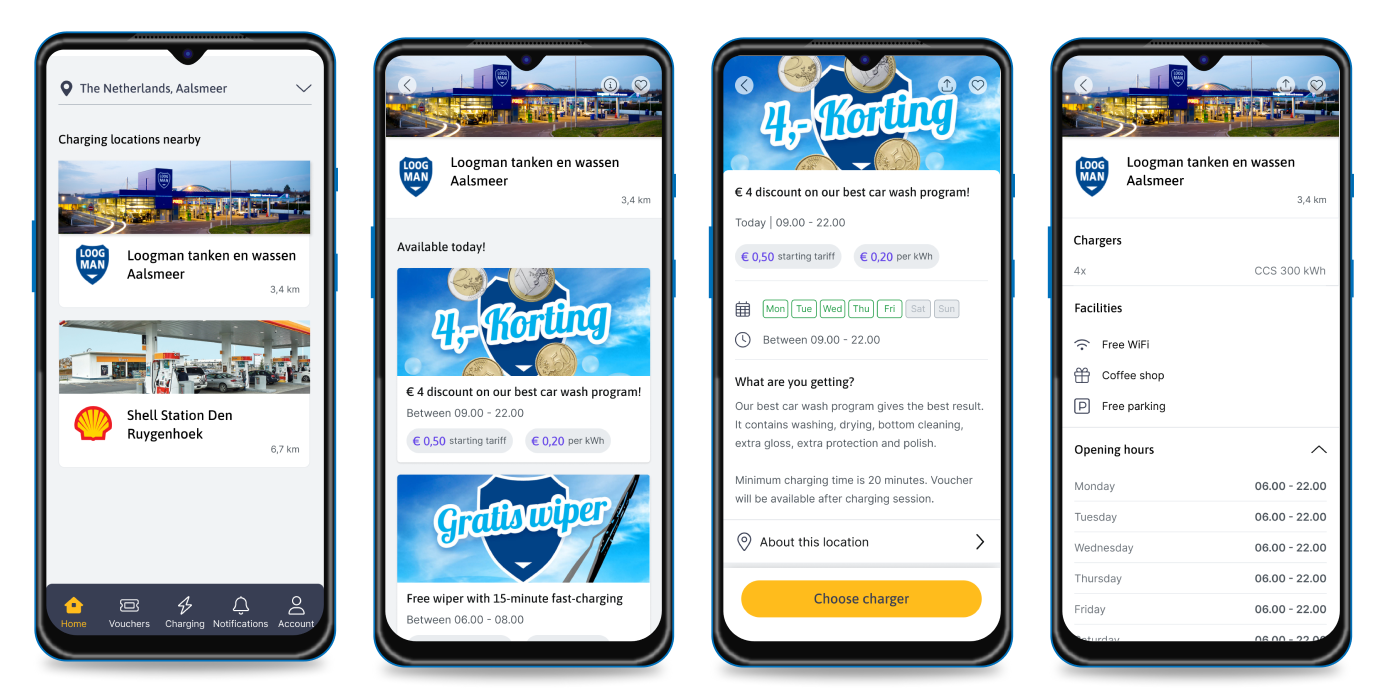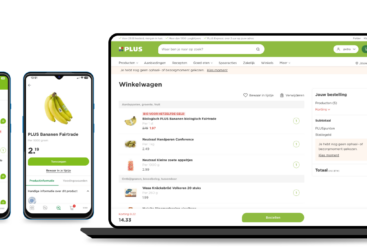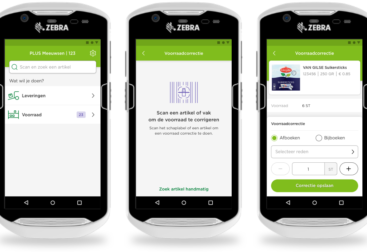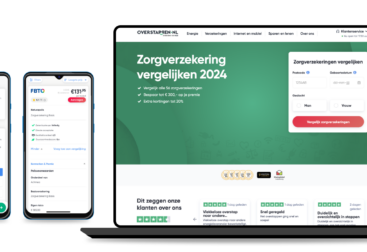Year: March 2023
Duration: 7 months
Role: UX/UI designer in scrum team
Client: QRID (startup of MultiTankcard)
Background
QRID is a platform that empowers Business Owners (e.g. gas stations) to integrate EV charging into their customer journey, by enabling them to integrate their loyalty programs seamlessly, take control over kWh pricing and create customer-focused marketing propositions. QRID is a start-up and part of MultiTankcard.
Upon joining the team was on the verge of releasing the Minimum Viable Product (MVP) for a select pilot testing group with 1 Business Owner and 10 Drivers.
Understanding the problem
In the MVP development process, user research predominantly focused on Business Owners, leaving a gap in understanding Drivers’ needs. This hindered the ability to create user-centric products.
The goal
The QRID pilot aimed to validate our hypothesis by testing technical feasibility, user usability, and desirability. Essentially, executing a production pilot to validate the technical setup of the platform.
In parallel, additional user research aimed to:
- Understand user goals and needs
- Uncover pain points in the existing user journey
- Gather insights for future features and improvements
The goal was to establish a transparent design process, addressing the needs of the team, stakeholders, and both Business Owners and Drivers.

Biweekly, I conducted design reviews with the team and relevant stakeholders to showcase my progress. Consider implementing regular cross-functional meetings or workshops to exchange insights and ensure alignment on design choices.
The research
Utilized a mix of research methods, including:
- Usability testing of the MVP
- Interviews and observations at charging stations
- Literature research
- Competitor app analysis
Usability testing
While time-consuming, usability testing unveiled crucial pain points, improvements and highlighted areas of opportunity.
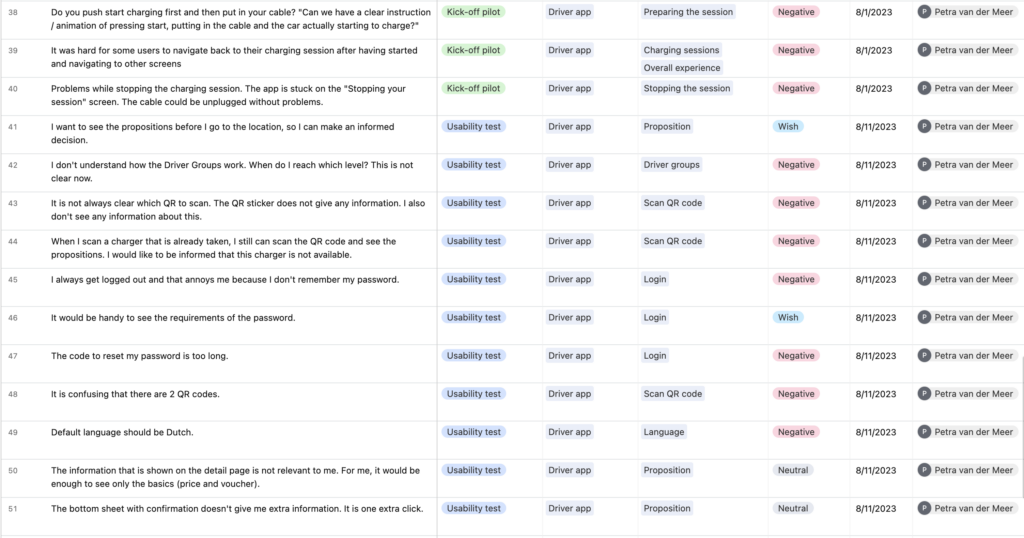
Creating an overview in Airtable of all the conducted research.
User journey
The user journey map was developed to illustrate both pain points and positive experiences within the overall user experience of EV charging. We learned that there are many different charging stations and cars, so the charging process is not linear.

Personas
The culmination of research resulted in the creation of 2 personas.
- Owner electric car
- Leaser electric car

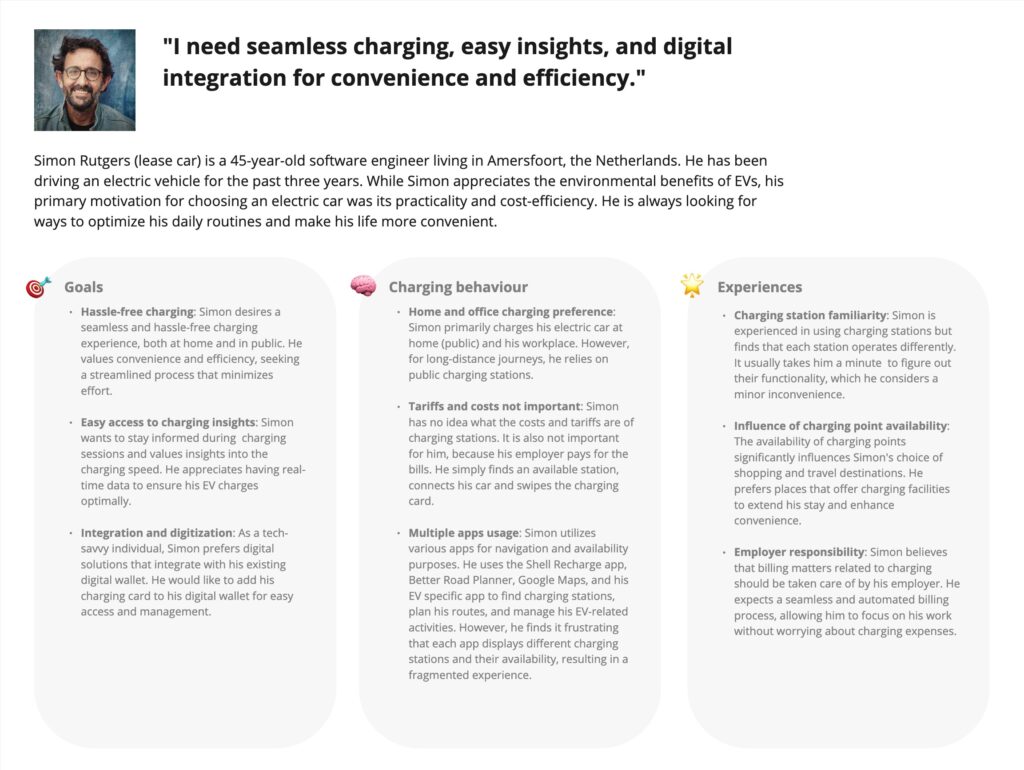
The main findings
FINDING 1
Improvements on usability
During usability testing, significant improvements were identified for the Drivers’ app. Key improvements include:
- Fingerprint or face login: Instead of typing in the password every time, the Driver can use his fingerprint or face to log in. It’s quicker and safer!
- Easy charging start: We added clear, step-by-step instructions to help the Driver start charging the vehicle without any confusion.
- Quick access button: We added a button that takes the Driver straight back to the ongoing charging session. It’s right there, so the Driver don’t have to search for it.
- Less stress with errors: We’ve made it so if the Driver makes a mistake, the app helps to fix it easily. The Driver gets clear messages if something goes wrong, and we’ve put in extra measures to stop errors before they happen.
After we made these changes, we asked more people to try using the app. This helped us make sure the improvements worked well for everyone.
FINDING 2
Offers visibility issue
Before, Drivers had to scan a QR code at the charging station to see offers. This made it hard for them to remember, so they didn’t use the app much and forgot about it. We suggest changing the app so that charging offers are easy to find without scanning.
Design
We first focussed on solving the offers visibility issue.
Browse and discover
The objective was to enhance users’ ability to explore and discover available options within the app, empowering them to make well-informed decisions about where to charge their cars.
I facilitated a workshop engaging the Business Owner and their teams to unveil crucial insights for enhancing the Driver app. We created several user journeys to discover what kind of charging offers would suit their clients needs.
This approach aligns with the AIDA model, aiming to generate interest in the product, stimulate a desire for it, and ultimately spur users into action.
With this in mind I created new pages:
- Proposition page (with content about the specific offer)
- Location page (with content about opening hours, facilities, type of chargers etc.)

Wireframes
At this stage, our focus was on ensuring the design’s scalability and future-proofing. At this stage we only had 2 locations in the app, but we anticipated the expansion of locations in the future.
After a few iterations, we had a set of wireframe flows we validated with users and stakeholders.

Snippet of all the wireframes
Final solution
Once the wireframes were finalized, I began translating them into high-fidelity designs. This involves adding more visual detail, defining color schemes, typography, and incorporating specific UI elements.
Once the flows were finished I created a prototype and tested the flows at the charging station location. I addressed the feedback I got from the users and the designs were final.
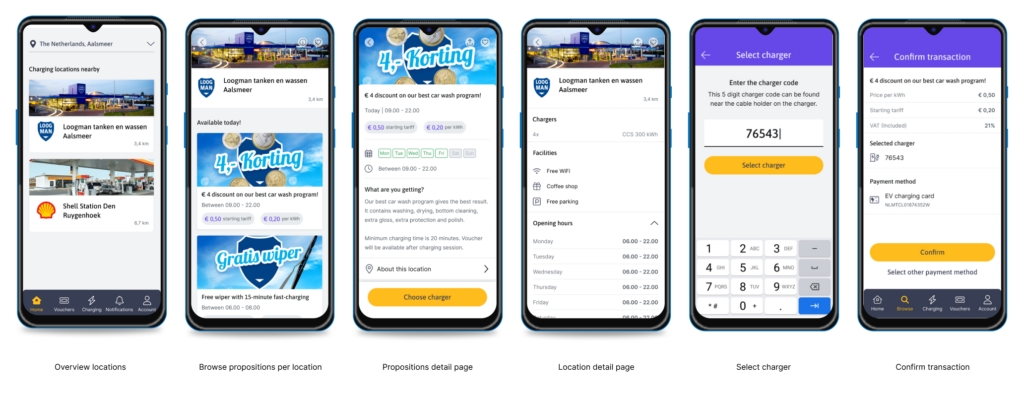
After that I finalized the user stories and did multiple refinements with the team.
Takeaways
In this instance, I focus on a single solution, although in reality, I tackled various epics. I’ve omitted them for the sake of simplicity and clarity.
The project’s most enjoyable aspect was its highly exploratory nature. QRID’s precise definition was not predetermined, and the team was granted significant freedom by stakeholders and investors. While occasionally challenging, this experience taught me the value of early-stage engagement, demonstrating that trust is indeed rewarded.
